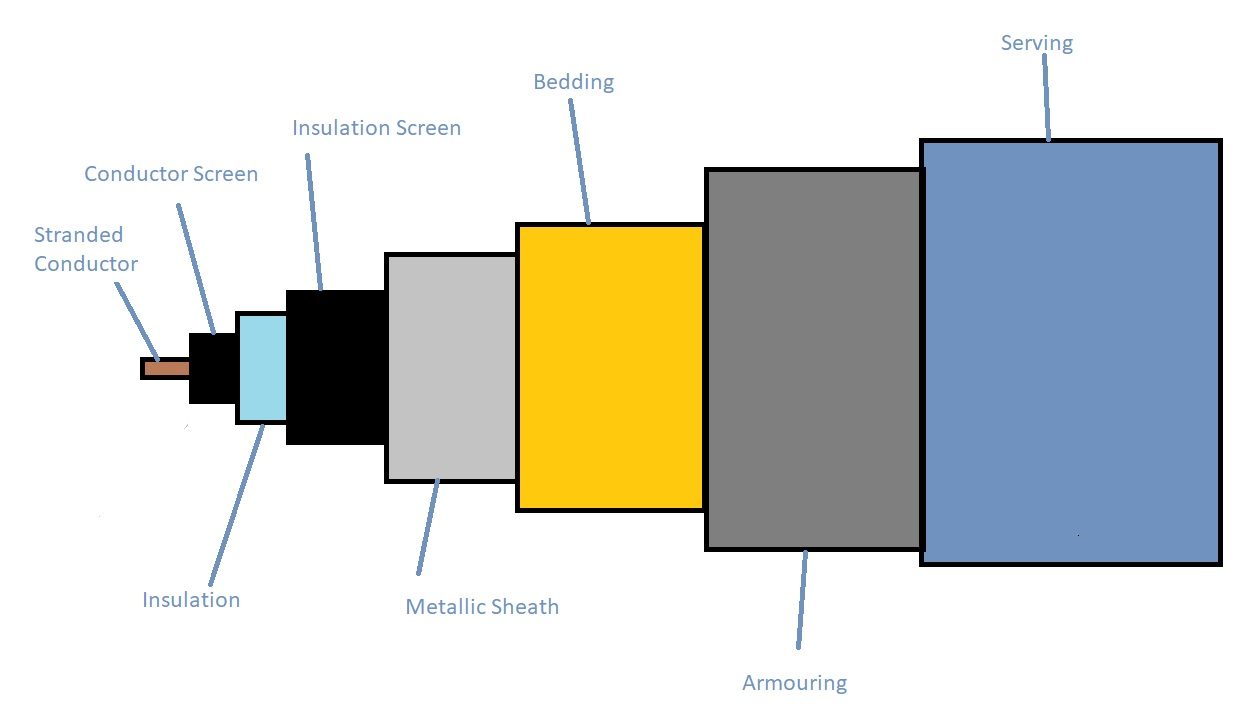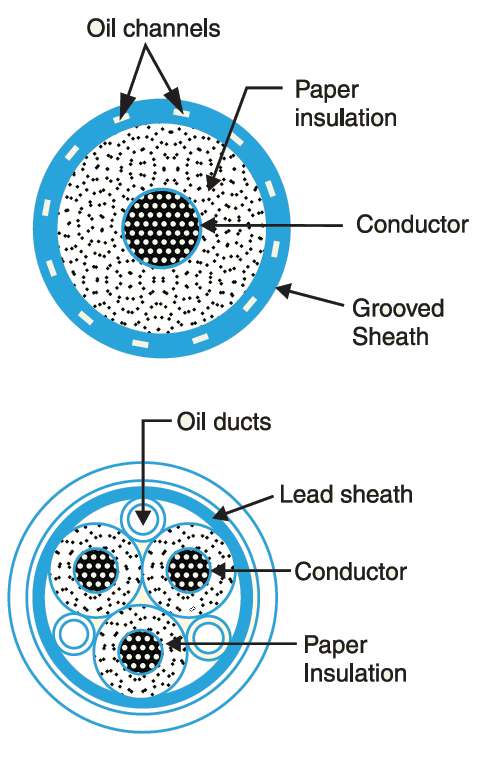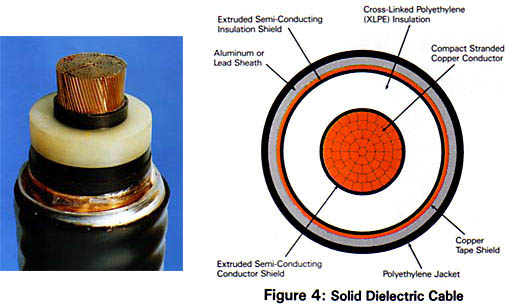Railway systems have lived through several years of automation and development. Today, railway electrification is the leading trend. This trend demands cables with nonpareil performance, safety, and reliability.
As such, underground cables are fast replacing overhead lines in powering electric railway tracks. The underground cable, particularly the pipe-type cable, comes with several benefits, ranging from minimal maintenance demands, superior insulation, and more extended life expectancy, to lesser tendency of fire hazards.
In this guide, you’ll find everything you need to know about pipe-type cables and other types of underground cables.
Let’s dive in.
What is an Underground Cable?
As the name implies, this is a cable tailored to be buried under the ground or within a conduit. If within a conduit, then an electrical conduit seal is necessary.
Generally, underground cables feature one or more stranded conductors at the core, covered by several protective and insulating layers. This build allows for satisfactory operation underground. Here’s the representation of a typical underground cable.
Underground cables use stranded conductors to help minimize proximity and skin effects and ensure the cable’s flexibility. The next conductor screen layer helps reduce electrostatic stress and ensure a uniform electric field.
The insulation screen also helps the material withstand electrostatic stress. A metallic sheath shields the cable from moisture and other potentially dangerous chemicals in the soil. To ensure that the metallic sheath does not corrode, there is another low-grade insulator called bedding.
During underground installation or its operational lifecycle, the cable may be subject to various stresses. But the steel tape layer covering the bedding offers the required mechanical protection. This layer is the armoring. The last layer, serving, further offers additional protection from contamination.
These layers make underground cables durable and tailored for underground purposes.
For insights into the differences between single conductor and multi-conductor cables, readers may find valuable information at AudioVideoElectric.
Types of Underground Cables
Generally, there are two types of underground cables;
- Pipe type cable
- Solid cable
The pipe-type model generally features multiple coaxial cables enclosed within a pipe. These cables have one to three solid conductors at their core, usually separated by an insulator as shown below. This cable can transmit 69kV through 345kV, making it the reliable choice for high-voltage transmission.

There are three types of pipe-type underground cables. These are the self-contained fluid-filled, high-pressure gas-filled, and high-pressure fluid-filled pipe-type cables. Understanding the specific types will help you make the right electrical splice kit choice for you.
Solid cable, on the other hand, uses cross-linked polyethylene as its insulator.
In total, there are four types of underground cables.
1. High-pressure, gas-filled pipe
A high-pressure gas-filled pipe-type cable features one to three high-voltage conductors enclosed in a steel pipe. These conductors could be aluminum or copper, insulated with pressurized inert gas, usually nitrogen gas as shown below. The gas pressure usually ranges from 12 to 15 atmospheres.
Nitrogen, however, is not the best when it comes to cooling the system or preventing unexpected electric discharges like the fluid-filled pipe. So, to prevent this discharge, the high-pressure, gas-filled pipe uses a larger area of insulation than the fluid-filled. In essence, the space containing nitrogen gas insulation in this case is 20% thicker than in a fluid-filled pipe.
Further, this type of cable features no serving or bedding, which affects its thermal resistance. Also, it is the best option for 35 to 275 kV applications.
The biggest advantage of this gas-filled pipe-type cable is the convenience of creating a sizable length using pre-impregnated insulation. Besides, nitrogen is readily available. As such, it is easy to supply the system with additional gas if the cable system breaks or leaks.
Also, with the fire extinguishing property inherent to Nitrogen, there is a lesser tendency of a fire hazard with this cable type.
2. High-pressure, fluid-filled pipe
This underground transmission line is a slight variation of the high-pressure, gas-filled pipe discussed and shown above. It is also made up of three high-voltage conductors enclosed in a steel pipe, with three paper insulations. It has a metallic shielding, which is made of lead in most cases.

The insulator, in this case, is a pressurized dielectric oil, usually maintained at a pressure of 200 to 300 psi. Compared to nitrogen gas, dielectric oil can better prevent electric discharge, which can cause the entire system to fail.
The dielectric oil also cools off the system satisfactorily. It does this in two ways depending on whether it is static or pumped. If static, dielectric cools the system by conduction. In other cases, you can pump the oil through the pipe to a pump station to cool off the heat.
Since the entire system is enclosed within the steel, steel serves to shield it from mechanical and moisture demands. It also brings the tendency of oil leakage to the barest minimum. There is also an extra layer of coating and cathodic protection preventing damage caused by chemicals.
Generally, oil-filled cables can perform excellently between 138 and 230kv.
3. Solid cable, cross-linked polyethylene
The solid cable, cross-linked polyethylene features a plastic jacket or a metallic outer sheath (usually lead alloy or aluminum), with the cable enclosed independently therein. Instead of oil or gas, in this cable, the cross-linked polyethylene serves as the insulating material. This material covers each conductor screen. And the conductor screens enclose a semi-conducting shield. The semi-conducting shield then encloses the conductor itself as shown below.

Similar to steel, the metallic sheath used also helps prevent moisture ingress to the insulating core. Ultimately, it helps maximize the life cycle and reliability of the product.
This cable type is best suited for transmissions of up to 380kV, featuring fewer maintenance demands. However, finding and monitoring insulation failures in solid cables is not always the easiest.
4. Self-contained fluid filled
This type of cable features hollow conductors, filled with pressurized fluid at 20 to 50 psi as shown below. Because of this low pressure, this cable can also be called the low-pressure, oil-filled pipe-type cable.

Each conductor is fluid-filled and covered by impregnated paper insulation, usually high-quality Kraft paper. For an extra layer of protection, there is a lead or aluminum sheath outer covering, followed by a plastic jacket. This entire system is what makes up a cable.
Now, the self-contained fluid-filled pipe may contain up to three cables, which work independently.
With the low-pressure fluid, there is also a minimal tendency for line failure and unwanted electric discharge. The aluminum or lead sheath further adds additional pressure on the fluid completing preventing moisture penetration.
Conclusion
Different underground cables are tailored to various applications in electrified transit. So, with an understanding of the components, the voltage they can handle, and their benefits and setbacks, you can make a better-informed decision when choosing one.
Following this straightforward guide, you’ll have an essential understanding of underground cable systems, particularly, pipe-type cable. You’ll understand the various types and components.
You may be interested in: The importance of winter garage door maintenance

